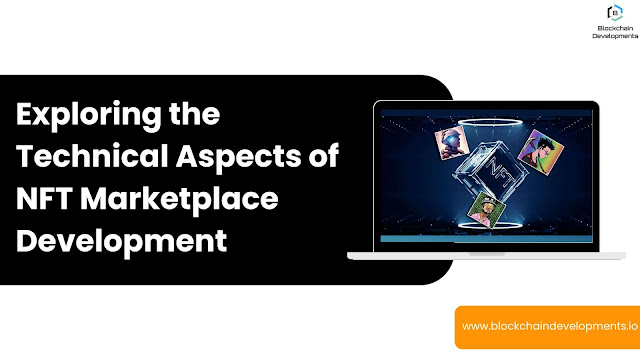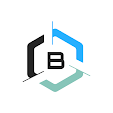Non-fungible tokens (NFTs) have become increasingly popular in recent years, with NFT marketplaces being developed to facilitate the buying and selling of these unique digital assets. Developing an NFT marketplace requires a deep understanding of the technical aspects involved in the process, including blockchain technology, smart contracts, and front-end development. As a leading name in the NFT marketplace development, we can create robust, user-friendly platforms for buying, selling, and trading NFTs.
Blockchain Technology
The backbone of any NFT marketplace is blockchain technology, which is used to securely store and transfer ownership of NFTs. The most commonly used blockchain for NFTs is the Ethereum blockchain, which uses the ERC-721 standard to define NFTs. Other blockchains like Binance Smart Chain and Flow have also emerged as popular options for NFT marketplaces.
To develop an NFT marketplace, developers need to understand the fundamentals of blockchain technology, including consensus mechanisms, gas fees, and wallet integration. Consensus mechanisms are the algorithms used to validate transactions on the blockchain, and developers need to ensure that their NFT marketplace integrates with the consensus mechanism used by the blockchain they are building on.
Gas fees are the fees paid by users to execute transactions on the blockchain, and developers need to ensure that their NFT marketplace is designed in a way that minimizes gas fees for users. Wallet integration is also a crucial aspect of NFT marketplace development, as users need to be able to securely store and manage their NFTs using a compatible wallet.
Smart Contracts
Smart contracts are self-executing contracts that are programmed to automate the process of transferring ownership of NFTs. Smart contracts are a crucial component of NFT marketplaces, as they enable the creation of transparent, secure, and efficient transactions.
Developers need to have a deep understanding of smart contract development in order to create a robust and secure NFT marketplace. Smart contracts are written in programming languages like Solidity, and developers need to ensure that their smart contracts are well-architected and secure against potential attacks like reentrancy attacks and front-running attacks.
Front-End Development
The front-end of an NFT marketplace is the user interface that allows buyers and sellers to interact with the marketplace. Front-end development involves designing and developing a user-friendly and responsive interface that provides users with an intuitive and seamless experience.
Developers need to ensure that their front-end design is accessible to a wide range of users, including those with disabilities. They also need to ensure that their front-end design is optimized for mobile devices, as many users will be accessing the NFT marketplace from their smartphones.
In addition, front-end developers need to ensure that their user interface is integrated with the blockchain and smart contracts used by the NFT marketplace. This involves integrating wallet providers, payment gateways, and other blockchain-based services into the user interface.
Conclusion
Developing an NFT marketplace requires a deep understanding of the technical aspects involved in the process. Developers need to have a strong understanding of blockchain technology, smart contract development, and front-end development in order to create a robust and secure NFT marketplace. In addition, developers need to be aware of the regulatory and legal considerations involved in NFT marketplaces, including intellectual property rights, tax obligations, and anti-money laundering regulations.
As NFTs continue to gain popularity, it is likely that the development of NFT marketplaces will become an increasingly important aspect of the blockchain industry. By understanding the technical aspects involved in NFT marketplace development, developers can create innovative and secure marketplaces that provide users with a seamless and intuitive experience.





0 Comments